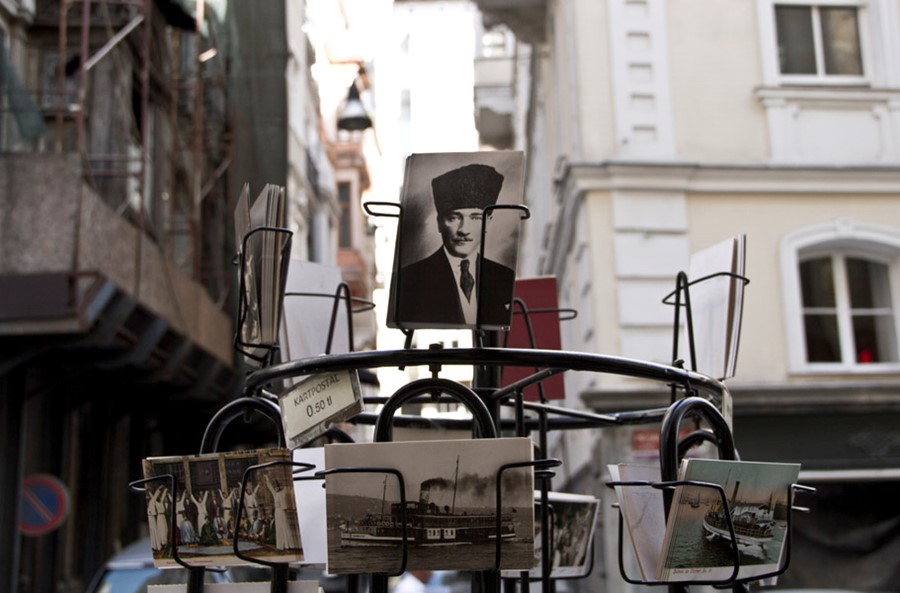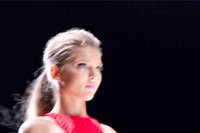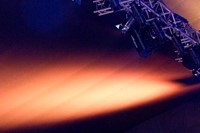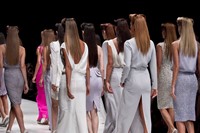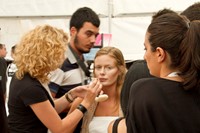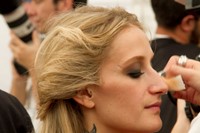East meets west geographically and culturally in Turkey’s largest city, Istanbul. Located across both the European (Thrace) and Asian (Anatolia) sides of the Bosphorus, Istanbul is the only metropolis in the world that is situated on two
East meets west geographically and culturally in Turkey’s largest city, Istanbul. Located across both the European (Thrace) and Asian (Anatolia) sides of the Bosphorus, Istanbul is the only metropolis in the world that is situated on two continents. Taking place between September 7 – 10, Istanbul Fashion Week perfectly demonstrates the mergence of old and new, bringing together contrasting cultures for a celebration of Turkish designers and brands in national and international tribunes.
For it’s fifth season, the event took place at the new location of Odakule tent, Beyoğlu as well as various other nearby locations around the city. Set on a steep hill north of the Golden Horn, facing the “old town” of Stamboul, the “new town” of Beyoğlu was the perfect area to host this fashion spectacular being the most active art, entertainment and nightlife centre of Istanbul. Whilst the spring/summer 2012 season offered up a mixed bag of designers – the city still has a way to go to reach the standard of New York, London, Paris and Milan fashion weeks – a few highlights gave a promising glimpse to the future of the evolving capital. On show at the IFW tent Özlem Kaya and Tuvanam gave way to two disparate but equally intriguing collections. The former, which took place on day two, came in a clean colour palette of white and light grey with a punch of fuschia. Deep V low backs, mermaid skirts and gowns, and wide-legged suits added an air of refined glamour complete with 40s curls and dark lipstick. On day four, Tavana Buyukcinar presented a clash of colour, prints, cuts and fabrics. Whilst appearing over the top as a whole, individual pieces such as her deep pink and purple digital print palazzo pants (which also came in turquoise) proved highlights referencing the 70s era similarly to Marc Jacobs’ spring/summer 2011 collection. Disappointingly however was the lack of Turkish references to many of the designer’s offerings, save Lug Von Siga (formerly at Costume National) whose venue of the historic Galatasaray Hamami (Turkish baths) was a welcome divergence to the monotony of the IFW tent catwalk. Bringing Ottomon culture to a contemporary realm her designs appeared darkly ethereal in hues of black, ecru and stone across fabrics of georgette, organza and silks. The loose silhouette gave way to a spiritual feel whilst adding a sense of sensuality as the over layering was removed to expose flesh at the finale.
Istiklal Caddesi provided the perfect light and retail relief amid the busy IFW schedule. Located in between the marble platforms and wells of the Galatasaray Hammami and the IFW Odakule tent the avenue stretches over three kilometres from Taksim Square to Tünel, the world’s second-oldest subway. Here one will find a range of shops and nice boutiques, art galleries, theatres, restaurants, cafes and nightclubs, dotted with corn on the cob and Simit (not dissimilar to New York pretzels) sellers as well as the iconic red carriaged tram that runs up and down the boulevard. Whilst a number of these venues wouldn’t look out of place in London or Paris, some are still housed in authentic 19th century Turkish architecture buildings. A look up to the sky, past the light decorations that crisscross the street one will see another world at rooftop level. 360 is one of these very places that comes alive at night. Situated atop circa 1910 art nouveau Misir Apartmenti, which also houses five floors of art galleries, this terrace offers a 360-degree view of the surrounding area as well as restaurant, club and bar. The luxurious Marmara Pera Hotel, Vogue and NuTerrace also offer incredible views of the city with the latter turning into NuClub at around 11pm.
Wander down any of Istiklal Caddesi’s side streets by day and one will come across a variety of treasure troves. On the music shop street of Galipdede Caddesi you will come across Binbavul Vintage (which also serves as a hostel). Hidden up a tiny cobbled alley it houses a bulging dressing-up box of vintage cocktail dresses from the 20s, military regalia and theatre props. At the other end of Istiklal Caddesi is Türvak: Türker İnanoğlu Cinema Foundation – Theatre Museum and Art Library. Spread over four floors the exhibition pays homage to Turkish cinema with thousands of portraits of cinema artists alive and deceased as well as old mechanical devices tracing back the country’s cinema history, such as the first film projector brought to Turkey (manufactured in 1904 and imported to Turkey in 1906.) Nearby Ara Café celebrates the still life imagery of Turkey’s most famous photographer Ara Güler, featuring the photojournalist’s black and white images across their walls. The cuisine is equally as tasteful offering a wide selection and twist on the usual Turkish cuisine. Dishes change seasonally with one of their most famous dishes being the Balkan Kofte (Balkan Meatballs).
Whilst the rest of the city has a lot to offer Beyoğlu provides nearly all one will need for a short stay. A must however is a visit to the Blue Mosque (Sultanahmet Camii), Hagia Sophia (Ayasofya) and Topkapı Palace (Topkapı Saray). Rich in cultural history and spectacular in architecture one can easily get lost gazing at the ornate interior decorations and high ceiling domes. The Grand Bazaar (Kapali Çarşı) provides endless hours of distraction being one of the largest and oldest (1461) covered markets in the world, with more than 58 covered streets and over 4000 shops you will be sure to find something to take home, along with 250,000 – 500,000 visitors it attracts every day.
For the past two years Istanbul has also played host to AnOther Magazine, Liberatum and Istanbul '74's Istancool Festival.
Text by Lucia Davies
